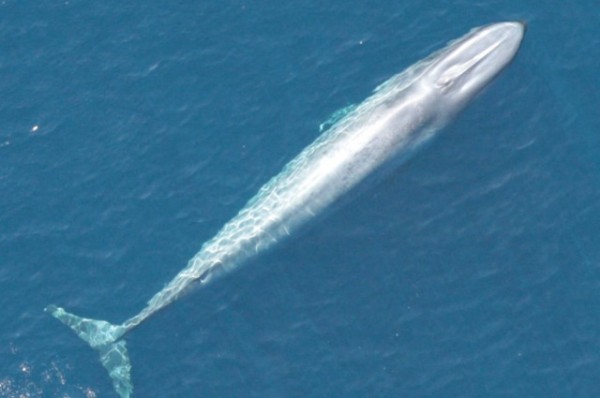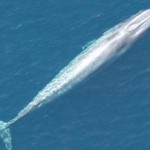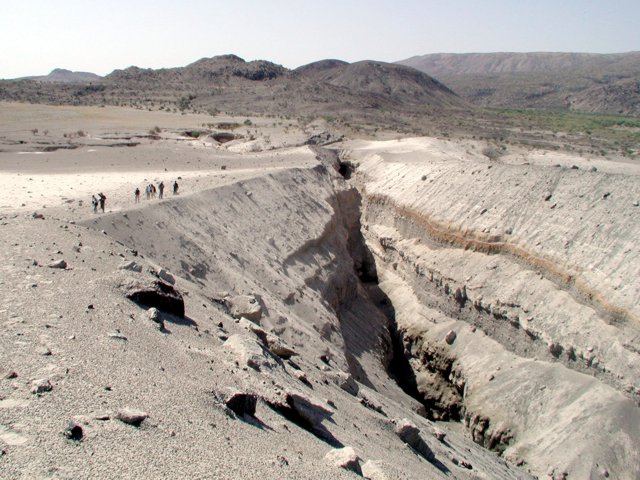
photo credit: Gilpatrick/Lynn/NOAA, via University of Washington.
Measuring some 30 meters (100 feet) in length and weighing in at a whopping 200 tons (181 metric), blue whales are the largest animals on Earth. In fact, they’re the heaviest animals to have ever lived on our planet, weighing more than the largest known dinosaur. Unfortunately, these iconic whales are an endangered species. They were aggressively hunted to the brink of extinction in the 1900s by whalers seeking their meat and oil. Between 1900 and the 1960s, it is estimated that around 360,000 blue whales were poached, mostly by Russian fleets.
Blue whales became protected in 1966, but since then their populations have only slightly recovered. Now, however, new research by scientists at the University of Washington suggests that California blue whales have bounced back. Remarkably, their population has now virtually returned to historical levels, making them the only population known to have rebounded from whaling.
“The recovery of California blue whales from whaling demonstrates the ability of blue whale populations to rebuild under careful management and conservation measures,” said Cole Monnahan, lead author of the Marine Mammal Science study, in a news release.
California blue whales, or eastern North Pacific (ENP) whales, range from the equator to the Gulf of Alaska. Previous work estimated that there are currently around 2,200 of these whales, which is 97% of the historical level, according to the new study. While that may seem unimpressive, considering 3,400 were caught from 1905-1971 compared to the 346,000 caught near Antarctica, it’s likely that their population was significantly smaller.
In order to figure out how many whales had been hunted, the researchers used Russian whaling data that was classified until fairly recently. While these archives provided the scientists with the location and size of catches, the records did not distinguish between the two different populations known to reside in the Pacific—the ENP and the western North Pacific (WNP). The latter is found near Japan and Russia.
Because the scientists didn’t know the boundary between these populations, they needed to find another way to separate out the catches. To do this, they listened to their calls, which differ between the east and west populations. After figuring out which whales were where, the researchers married up this information with whaling data and were able to determine which whales were caught.
Now that the whales are back to 97% of their past numbers, their population growth has slowed significantly. It was suggested by some that this is perhaps due to ship strikes, but the researchers believe that it is most likely due to the fact that their habitat cannot support larger numbers.
It is estimated that at least 11 blue whales are struck by ships each year along the US West Coast, which is above the legal limit of three per year. However, the researchers suggest that it would take an 11-fold increase in vessels before there is a 50% chance that the population would be considered depleted, further supporting the idea that habitat limits—rather than ship strikes—are preventing further growth.
“California blue whales are recovering because we took actions to stop catches and start monitoring. If we hadn’t, the population might have been pushed to near extinction—an unfortunate fate suffered by other blue whale populations,” Monnahan said. “It’s a conservation success story.”








 Photographer Finds Locations Of 1960s Postcards To See How They Look Today, And The Difference Is Unbelievable
Photographer Finds Locations Of 1960s Postcards To See How They Look Today, And The Difference Is Unbelievable  Hij zet 3 IKEA kastjes tegen elkaar aan en maakt dit voor zijn vrouw…Wat een gaaf resultaat!!
Hij zet 3 IKEA kastjes tegen elkaar aan en maakt dit voor zijn vrouw…Wat een gaaf resultaat!!  Scientists Discover 512-Year-Old Shark, Which Would Be The Oldest Living Vertebrate On The Planet
Scientists Discover 512-Year-Old Shark, Which Would Be The Oldest Living Vertebrate On The Planet  Hus til salg er kun 22 kvadratmeter – men vent til du ser det indvendigt
Hus til salg er kun 22 kvadratmeter – men vent til du ser det indvendigt  Superknepet – så blir snuskiga ugnsformen som ny igen!
Superknepet – så blir snuskiga ugnsformen som ny igen!  Meteorite That Recently Fell in Somalia Turns Out to Contain Two Minerals Never Before Seen on Earth
Meteorite That Recently Fell in Somalia Turns Out to Contain Two Minerals Never Before Seen on Earth  Nearly Frozen Waves Captured On Camera By Nantucket Photographer
Nearly Frozen Waves Captured On Camera By Nantucket Photographer  It’s Official: Astronomers Have Discovered another Earth
It’s Official: Astronomers Have Discovered another Earth 